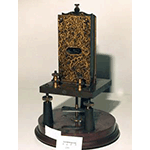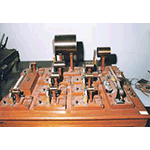Universitą degli Studi di Firenze - Dipartimento di Scienze Fisiologiche [University of Florence - Department of Physiological Sciences]
In 1863 the German physiologist Maurizio Schiff founded, in Via Gino Capponi, the Laboratory of Human Physiology, marking the beginning of real scientific and academic activity in this field. In relation to the experimental research conducted by Schiff and his Russian assistant Alessandro Herzen, a heated debate on the issue of vivisection arose. In 1873 there was even a lawsuit brought by a group of Florentine noblemen against Schiff, accused of having disturbed the peace and quite of their homes with certain "horrifying howls and shrieks of pain [...from] live animals such as dogs, cats and every other species of animal". Herzen participated in the debate with a brilliant pamphlet titled Gli animali martiri, i loro protettori e the fisiologia, declaring "The animals martyrs to physiological experiments are so few as compared to the animals martyrs to other activities of mankind (nutrition, convenience, luxury, gluttony, ignorance, whim, ferocity and vainglory, amusement)." The dispute grew to fill the pages of important foreign newspapers, such as the British "Daily News" and the "Times", then slowly concluded when the two physiologists left the city.
In 1936 the Laboratory was moved to Careggi, in Viale Morgagni, the site it still occupies today. In the Seventies it became the Institute of Physiology and, in 1986, the Department of Physiological Science. From the time of the Laboratory’s foundation, a great number of scientific apparatuses has been utilised for conducting research.
The Department has a collection (about 200 objects datable starting from 1880) composed basically of apparatus used for electrical stimulation and for recording electrical or mechanical parameters. Noteworthy in particular is a Mosso ergograph, used in the past to record the muscular contractions of the middle finger, some kymographs, also used to measure the muscular events of the organism, and a Boulitte electrocardiograph, in addition to various galvanometers, ammeters and instruments of more general use.
****************************
Texts by Graziano Magrini
English translation by Catherine Frost
Last update 07/feb/2008





